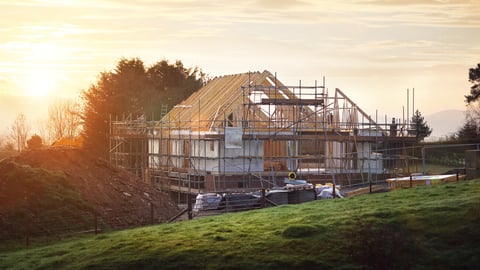Key housing takeaways from the American Community Survey
Each year since 2005, the U.S. Census Bureau has conducted the American Community Survey (ACS), which compiles, among a slew of other data points, a comprehensive view of the U.S. housing landscape.
A good chunk of this year's data is in, and Alexander Hermann, a senior research associate with the Joint Center for Housing Studies of Harvard University, has shared 10 trends that lumber, building supply and hardware pros might consider monitoring closely. Here's a snapshot of what the latest ACS data is revealing.
Renter unaffordability is spiraling.
Hermann writes: "The new ACS data show that in 2023 a record high 22 million renter households spent at least 30 percent of their income on housing. This marked an increase of 226,000 from the previous year and an increase of more than 2.1 million since before the pandemic in 2019."
Making matters worse, rents are increasing at a greater clip than incomes.
Homeowner affordability is also going in the wrong direction.
No surprise here, unfortunately. "The number of homeowners who spent 30 percent or more of their income on housing also rose in 2023 to 19.8 million households, up 723,000 from a year earlier and up fully 3.2 million since 2019," Hermann writes.
It's not just the mortgage.
The data shows that median monthly costs for homeowners (with a mortgage) are up 7 percent year-over-year and up 18 percent compared to 2019. Hermann cites rising property taxes and insurance premiums as two obvious culprits driving costs upward.
Homeownership among younger adults is down.
"Homeownership rates among households under age 35 decreased 0.5 percentage points in 2022-2023 to 36.1 percent," which is the first "meaningful decline for this age group in nearly a decade," per Hermann.
Black homeownership is rising.
ACS data shows that more African Americans are becoming homeowners, with that figure increasing by 0.6 percentage points in 2023. However, "at 44.7 percent, the homeownership rate for Black households remained 27.7 percentage points below the homeownership rate for white households (72.4 percent)," writes Hermann.
Household growth slowed in 2023 (compared to 2022).
"The number of households in the US rose by 1.46 million in 2023, a 1.1 percent increase year over year," Hermann shares. However, this figure pales in comparison to the 2.33 million increase posted in 2022.
For more timely housing data and insights on the latest ACS data, read the rest of Hermann's takeaways here.



